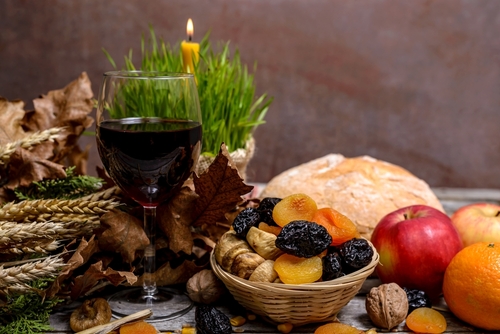For many around the world, the Christmas season ends after December 25th. However, for more than 260 million Orthodox Christians, the main festive celebrations are just beginning. Orthodox Christmas, observed on January 7th, is a profound spiritual event rooted in ancient traditions that emphasize faith, family, and reflection. Whether you’re part of an Orthodox community or simply interested in global cultures, understanding this celebration offers a unique glimpse into one of the world’s oldest Christian traditions. This guide will walk you through the history, customs, and significance of Orthodox Christmas in 2026.
The History and Origins of Orthodox Christmas
The date of Orthodox Christmas is determined by the Julian calendar, which was established by Julius Caesar in 45 B.C. While most of the world later adopted the Gregorian calendar in 1582, many Orthodox churches continue to follow the Julian calendar for their religious observances.
This results in a 13-day difference, placing Orthodox Christmas on January 7th according to the Gregorian calendar. Countries where Orthodox Christianity is the dominant religion, such as Russia, Ukraine, Serbia, Georgia, and Ethiopia, officially celebrate Christmas on this day.
The spiritual focus of the celebration is the Nativity of Jesus Christ. The period leading up to it, known as the Nativity Fast, is a time of solemn reflection and spiritual preparation. This 40-day fast, beginning on November 28th, involves abstaining from meat, dairy, and other animal products as a way to purify the body and soul before the holy day.
How Orthodox Christmas Is Celebrated Today
While customs vary from country to country, the core elements of Orthodox Christmas are shared by communities worldwide. The celebration is a beautiful blend of solemn church services, festive family gatherings, and time-honored traditions.
The Holy Supper (Svyata Vechera)
On Christmas Eve (January 6th), families gather for the Holy Supper, or Svyata Vechera in Slavic traditions. This meal is traditionally meatless and dairy-free to honor the Nativity Fast. The supper often begins after the first star appears in the sky, symbolizing the Star of Bethlehem.
The meal typically consists of 12 dishes, representing the 12 apostles. Common foods include:
- Kutia: A sweet grain pudding made from wheat berries, poppy seeds, nuts, and honey. It is the central dish and is eaten first to symbolize unity and hope.
- Borscht: A meatless beet soup that provides warmth and sustenance.
- Varenyky (Pierogi): Dumplings filled with potatoes, cabbage, or mushrooms.
- Fish: Baked or fried fish, often carp or herring.
- Compot (Uzvar): A sweet drink made from dried fruits like apples, pears, and prunes.
A small bundle of hay, called a didukh, is often placed on the dinner table to represent the manger where Jesus was born and to honor the family’s ancestors.
Midnight Church Services
Following the Holy Supper, many families attend a midnight liturgy. Churches are beautifully decorated and illuminated with candles, creating a serene and reverent atmosphere. The services are filled with hymns, prayers, and chants that celebrate the birth of Christ. For many, this service is the spiritual peak of the holiday, a moment of collective worship and joy.
Christmas Day Traditions
On January 7th, the fast is broken, and the feasting begins. Families and friends visit one another, sharing elaborate meals that include roasted meats, sausages, and rich desserts. It is a day of joy, hospitality, and fellowship.
Caroling is another cherished tradition. Groups of children and adults go from house to house, singing carols (koliadky) and wishing their neighbors health and prosperity. In return, they receive sweets, pastries, or small amounts of money.
Evolving Trends in the Celebration
In recent years, especially among diaspora communities, some families have adapted their celebrations. While maintaining the core spiritual traditions, they may blend them with local customs. For example, some may exchange gifts on Christmas Day, a practice more common in Western traditions, in addition to celebrating St. Nicholas Day earlier in December.
There is also a growing movement to reconnect with and preserve older, more regional traditions that may have been lost over time. This includes reviving specific recipes, songs, and crafts associated with the holiday, ensuring these rich cultural practices are passed down to future generations.
Frequently Asked Questions (FAQs)
When is Orthodox Christmas in 2026?
Orthodox Christmas in 2026 will be celebrated on Tuesday, January 7th. Christmas Eve will be on Monday, January 6th.
Why is Orthodox Christmas on a different day?
Orthodox Christmas is celebrated on January 7th because many Orthodox churches follow the Julian calendar for their religious holidays. The 13-day difference between the Julian and Gregorian calendars places the celebration on this date.
What is the most important food eaten during Orthodox Christmas?
Kutia, a sweet grain pudding, is arguably the most significant dish. It is the first food eaten during the Holy Supper on Christmas Eve and symbolizes hope, immortality, and the connection between generations.
Do Orthodox Christians exchange gifts on Christmas?
Gift-giving traditions vary. In many Eastern European countries, St. Nicholas Day (December 19th on the Julian calendar) is the primary day for giving gifts to children. However, some families, particularly in the diaspora, have adopted the Western custom of exchanging gifts on Christmas Day as well.
